What is the Ideal Wind Speed for Sailing?
Do you like a challenge, or are you a fairweather sailor like me? I've actually checked the facts (and many opinions) and came up with these wind speeds for different sailing styles:
The ideal wind speeds for sailing are:
- most comfortable sailing: 5 - 12 knots
- absolute beginners: under 10 knots - anything under 10 knots prevents capsizing
- for more serious training: 15 - 20 knots
- for heavy offshore boats: 20 - 25 knots - anything under 12 and the boat doesn't even come to life
- 25 knots and up is considered rough for any small/mid-sized boat
The best wind speed for sailing is one that allows you to navigate the boat safely, within your abilities, while at the same time challenging you - without exceeding the hull speed of the boat (making the trip unnecessarily dangerous).
In all honesty: there is no ideal wind speed for everyone all the time. But there is one for you, for this particular moment. It depends on your skill level, boat type, your desires, location, and many other conditions. But if you know what you're after, I can probably give you a good range to work with.
So instead of giving you one answer, I'll try to explain what speeds and different combinations of these factors look like - so you can make your own decision on what's best for you at the moment.
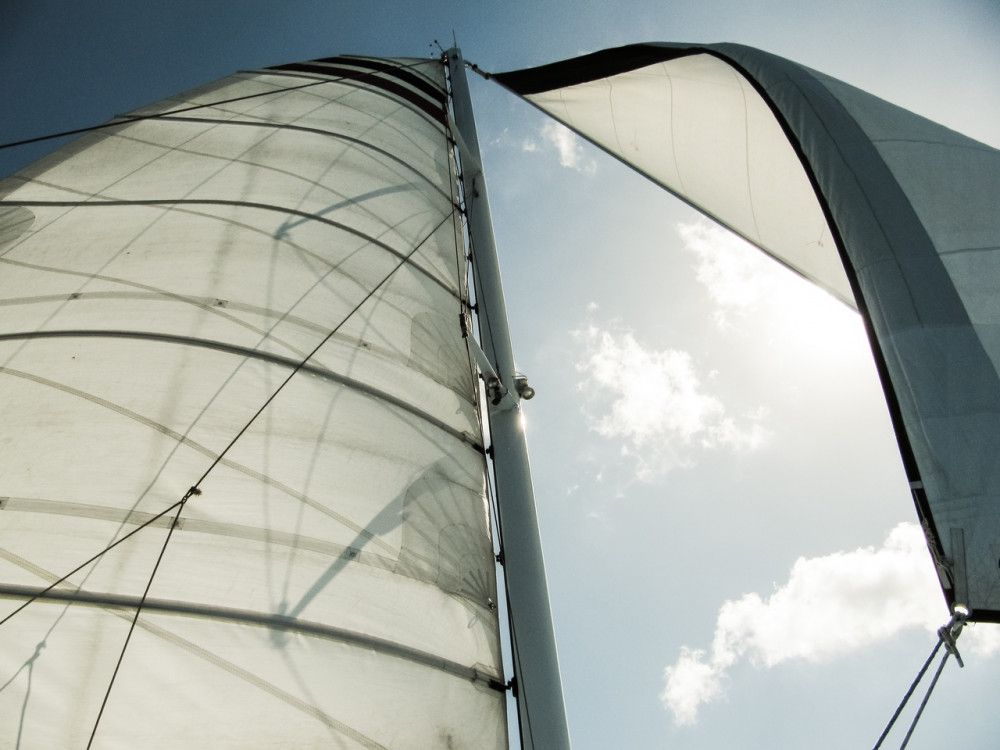
On this page:
Best Wind Speed for Training
There are two ways to go at it. One is to say you want to play it safe, and in any case, you want to avoid the risk of capsize at all cost. Try and find winds of under 10 knots. This will give you time to get to know your boat and get a feel for the handling.
The other is to say: train as you fight. If you want to be able to sail in all conditions, and not just 7-knots-sunny-beers-and-burgers kinda weather ... you should train in all conditions. I'm a fan of this last one, as I've noticed my improvement go through the roof anytime I overstretch my skills a bit.
As with anything in life, if you want to get skilled, you should expose yourself to some discomfort. I'd say 15 - 20 knots is a great opportunity for learning.
So, if you want to get better, you should:
- know what type of wind you're great in, and enjoy the easy ride
- know what type of wind you're a mess in
- go after that wind speed and up - extend beyond your comfort zone
So in short, if you want to really improve your sailing, train in conditions you suck in. Really consider 20 knots a blessing, not a threat.
Also, if you feel unsafe and in over your head, you're probably right. Trust your intuition. It's a fine line between challenging and hurting yourself.
Easiest wind speed
It's tempting to say: the lower the better. But anyone who's ever tried to get into motion by using any type of sail, knows this is not the case. There should be wind. Sailing in light winds can be difficult and also a drag. I'd say that winds under 6 knots don't do much for me, however, it requires skill also to maneuver with little wind.
The easiest wind speed for sailing is anything from 7 - 10 knots. It's not fast enough to risk capsizing, but it's enough wind to allow for some interesting maneuvers.
Minimum wind speed
The minimum speed for sailing is about 5 knots. Anything under won't get you into motion (except for very small sailboats, such as sunfish). If you can't detect it on a gauge, it won't do much in your sails.
Sailing in light winds is a skill on its own. Most experienced sailors that have learned to rely on feel over the years tend to overreact to any impulses from the wind, losing speed.
If you do find yourself in very light winds, try not to oversteer and to overadjust. Let the sails catch wind and just hang back.
Wind Speeds For Different Boat Types
- Sunfish dinghy: stay under 15 knots - risk of overpowering your boat
- Up to 26' sails best between 10 - 20 knots
- Heavy > 26' sailboats can go out 15 - 25 knots without problems.
When is it too Windy?
First off: you shouldn't try to avoid bad weather, because it's you will run into it at one point - and that's the worst moment to figure out how to deal with all of it. Better to face it now willingly and be prepared.
So when should you definitely avoid getting out?
It's not so much the wind speed, as the height of the waves you should look out for. Wind is easy to manage (simply reef down). As long as you have flat water, it's smooth sailing. The water can be great at 20 knots.
The second thing is gusts over a steady wind. I prefer a 25 knots steady wind over 18 knots wind gusts with waves anytime.
Mid-sized (26') boats start to heel a lot at about 23 knots, so that's when the ride can become uncomfortable. Small boats start to heel a lot sooner.
Also, check the manufacturers specifications of your boat. Every boat is designed with certain conditions in mind, and it will handle best in those conditions. Try to keep to the manufacturers recommendations as much as possible (the hull speed, for example).
How to Try Out Faster Wind Speeds
Okay, you're planning to go out with 20 knots. If you're feeling a bit uncertain, that's fine, and understandable. How to do it responsibly? Simply build it up slowly.
I recommend by going out reefed down. Reefing is your friend. It takes off the edge. Do a couple of runs. If it feels alright, shake it out and go for it.
Top tip: reef the main sail before you go out. It's way easier than doing it in full winds
It doesn't mean it's too windy when the wind speed requires you to reef down. Reefing is just another tactic to handle your boat comfortably, and I encourage you to use it when you need to. The need to reef over 15 knots is normal.
Having too much sail is always uncomfortable, though many sailors are permanently overcanvassed.
Docking may be the hardest part
The most challenging part of heavy winds is docking and getting in and out of the marina. Always dock at a speed you're comfortable with hitting things (it will happen). When rolling out, use your throttle, be decisive where you want to go, otherwise the winds and waves will take you for a ride. Have a docking plan ready.
Can a Bigger Boat Take More?
Yes and no. It's not all about the size of your boat, the amount of sail is also important. Bigger boats usually have better rigging and systems for dealing with heavier wind. It makes sense: since they require more wind to get into motion, they should be able to handle more wind as well. But it's not true that small boats can't take high wind speeds.
Planning Your Trip
It's important to check the forecast before leaving for your trip. Keep in mind that any forecast predicts average wind speed. Wind gusts will be up to 40% faster, so take this into the equation.
Wave conditions are also an important part. You should know how your boat reacts to short and sharp waves against longer, flatter waves. If you sail offshore, take swell waves into account. Swell waves don't reach enclosed waters, but they do affect their entrances.
Beaufort wind scale to knots - mph - plain English
In planning your trip and checking the forecast you might encounter F5 - F6 - etc. This is the Beaufort wind force scale. It's used to express the speed of wind and is indicated in Force (F). Below you'll find a Beaufort scale conversion table.
| knots | mph | Beaufort (F) | English |
|---|---|---|---|
| 5 | 6 | 2 | Light breeze |
| 10 | 12 | 3 | Gentle breeze |
| 15 | 17 | 4 | Moderate breeze |
| 20 | 23 | 5 | Fresh breeze |
| 25 | 29 | 6 | Strong breeze |
| 30 | 35 | 7 | High wind |
| 35 | 40 | 8 | Gale |
| 45 | 52 | 9 | Severe Gale |
| 55 | 63 | 10 | Storm |
| 60 | 69 | 11 | Violent storm |
| 65 | 75 | 12 | Hurricane |
If you want to convert your knots to mph yourself, simply multiply by 1.1508:
One knot is about 1.1508 mph
Estimate Wind Speed Using Waves
A forecast isn't always right. Not only can the weather change in an instance, they can also be just blatantly wrong. It's always a good idea to know how to check the wind speed yourself. You can use a wind gauge for this, but you can also easily check by looking at the waves.
Reading the waves to estimate wind speed is a quick and reliable way to make sure you don't get in over your head. Water doesn't lie: it always shows. I encourage to take a look at the pictures below to get a sense of the different wave types for each wind force.
Wind force 0
Mirror-like sea, no waves whatsoever.
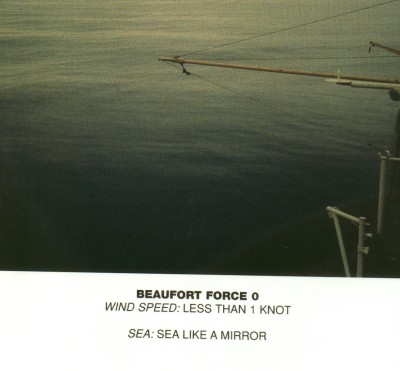
Wind force 1
Ripples but no white foam.
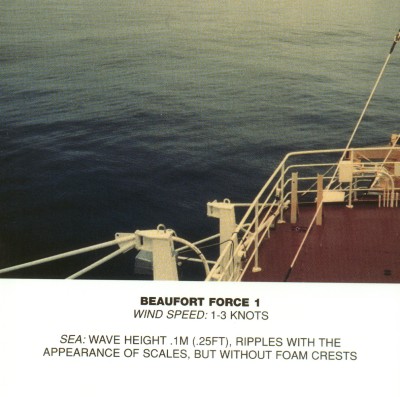
Wind force 2
Small waves that don't break.
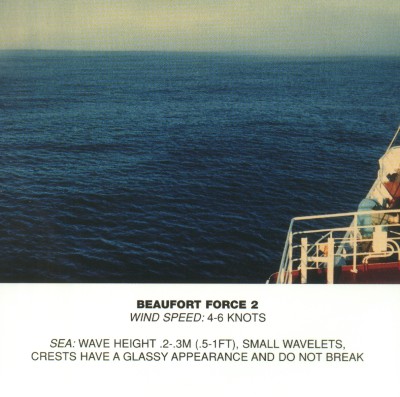
Wind force 3
Large waves, crest begin to break; whitecaps.
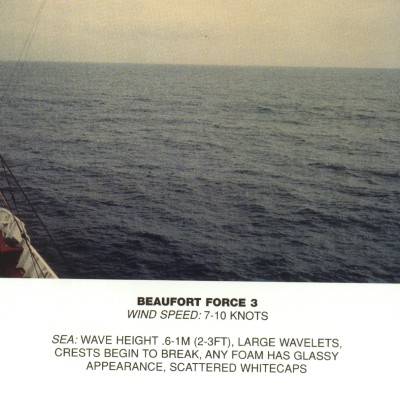
Wind force 4
Waves become longer and more pronounced, regular white horses.
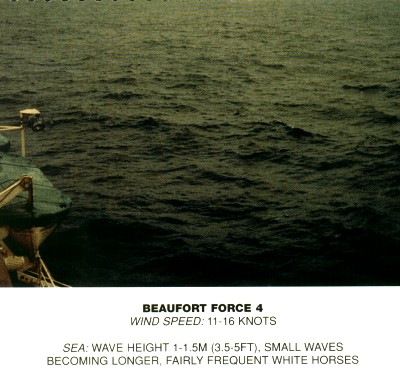
Wind force 5
Fairly long waves, many white horses.
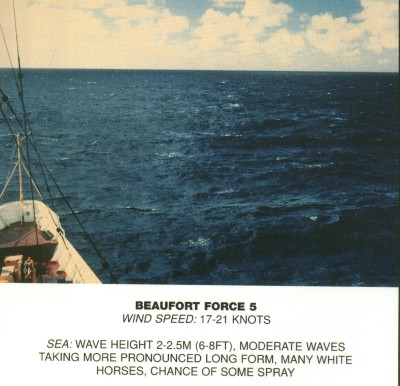
Wind force 6
Waves become pronounced and large, many white crests, probably some spray.
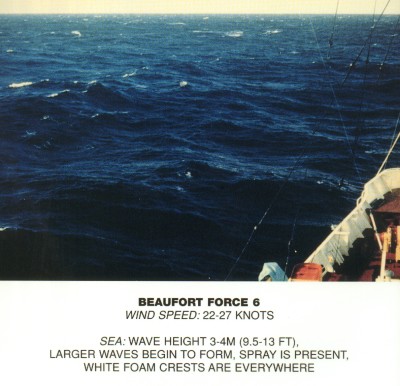
Wind force 7
Visible spindrift (spray blown from crests of waves). White foam from breaking waves visible.
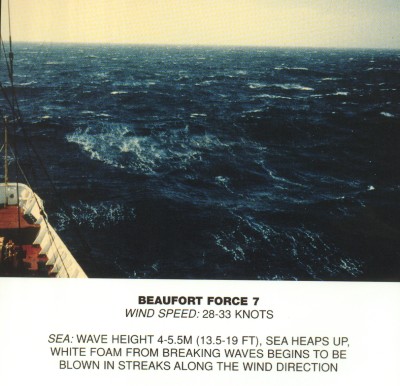
Wind force 8
Longer and pretty high waves; lots of spindrift. Very clear streaks of foam that is blown in direction of the wind.

Wind force 9
High waves. Dense streaks of foam along the direction of the wind. Sea begins to roll. So much spray it restricts visibility.
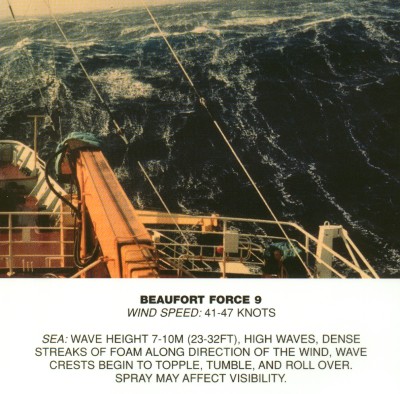
Wind force 10
Very large waves with overhanging crests. The whole sea gets a white appearance.
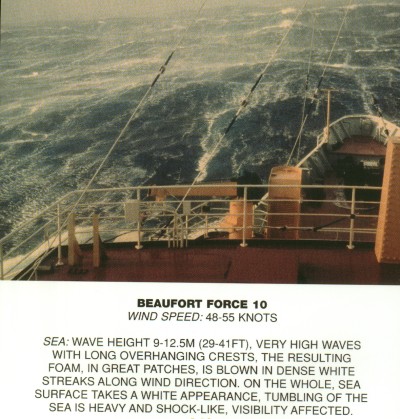
Wind force 11
Exceptionally high waves, able to hide small boats from sight for long periods of time. The sea is covered in white patches of foam.
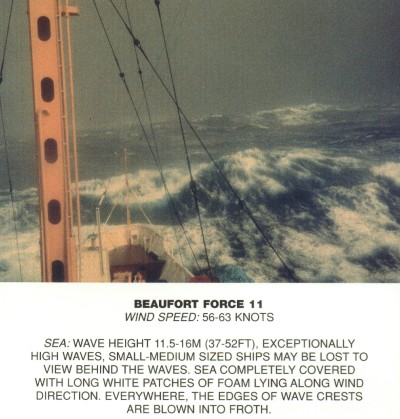
Wind force 12
Hard to see due to foam and spray. Entire sea is covered in a white layer.
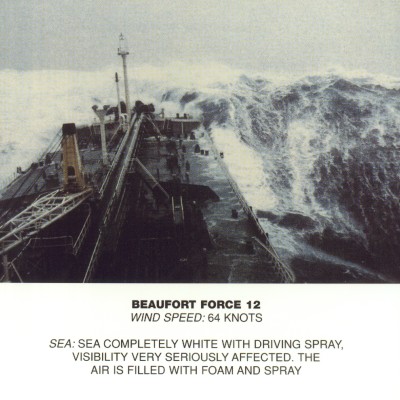
Get Started Sailing Fast (and Save Money)
I have written a detailed e-book that contains actionable step-by-step lesson plans for different budgets and situations. This book will save you hundreds of dollars, hours, and a headache. You can get it here. Please check it out. You will support our work, and more importantly: it will help you get started much quicker and cheaper.
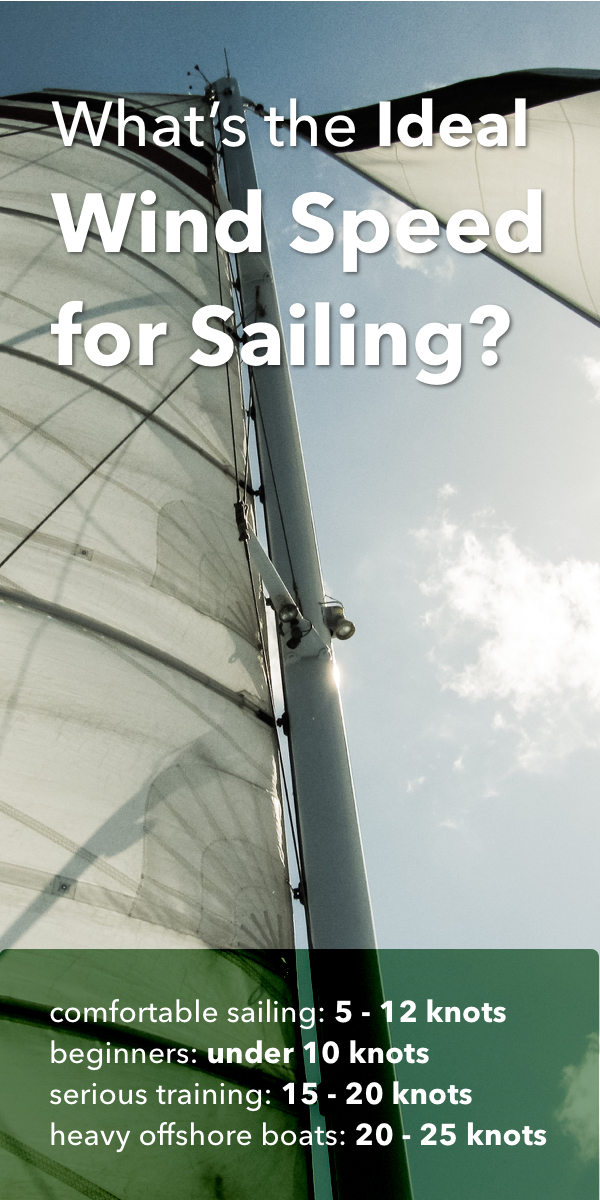
Did you find the answer to your specific question?
👍 25 👎 0


Comments
Joseph Agius
Hi am 65 years old and I just bought my first sailing boat Dromor 1992 Apollo 12 40Ft. I had my boat since 12 July 2019 I been out every week from zero wind to 10 knots. This Saturday 21St October 2019 first time going out with wind up to 10 konts to 13 knots I am not an expert but I feel confident going out after I read your article any advice please.
Regards
Joseph
P.N.
Your article give me more confident to sail you explained every aspect of wimd, waves and wrote many ideas about sailing save, which makes me more comfortable.
Tracey Shadday
Your article on wind speed and sailing was interesting and helpful. Yesterday I took a Sunfish out in what I was told was 11 knot wind. Very soon after embarking I jibed and turtled the boat. This morning I looked at marine data and found the actual wind was 15-22 knots. I was not skilled enough for this moderate breeze. Your suggestion to look at the water and photos to go with it was helpful. Thank you!
Abraham
improvesailing.com
improvesailing.com
Leave a comment